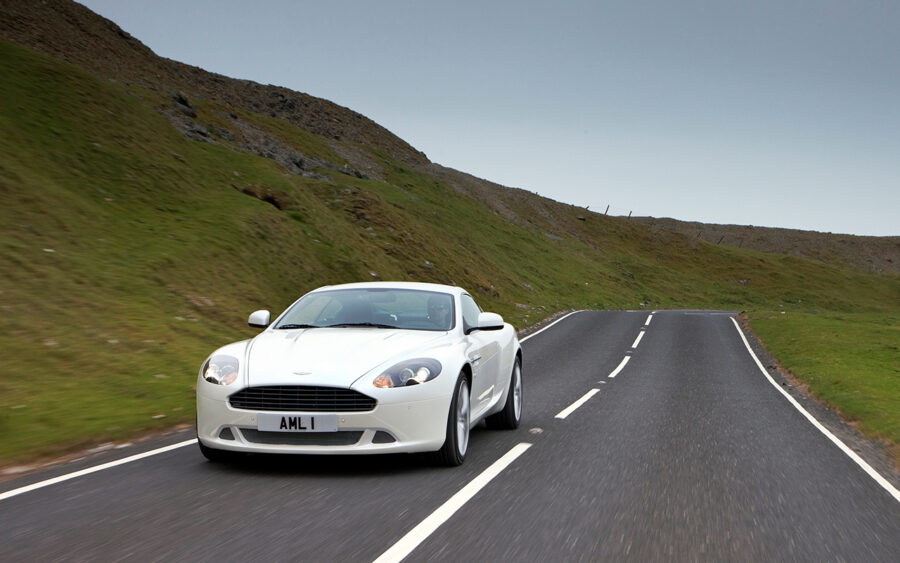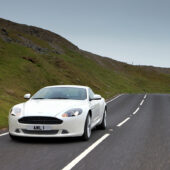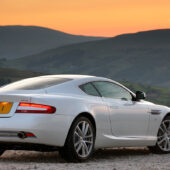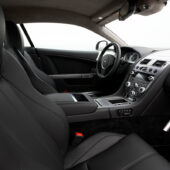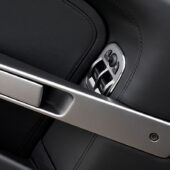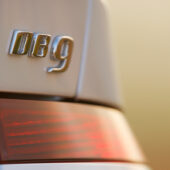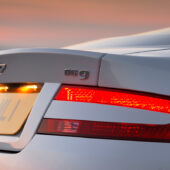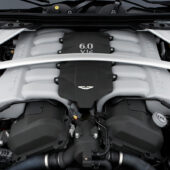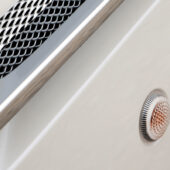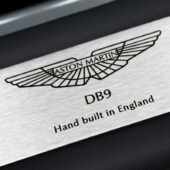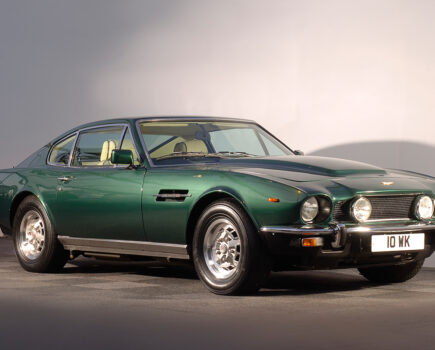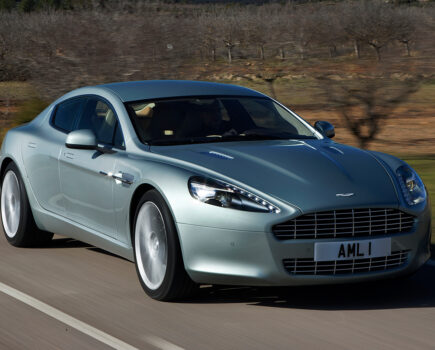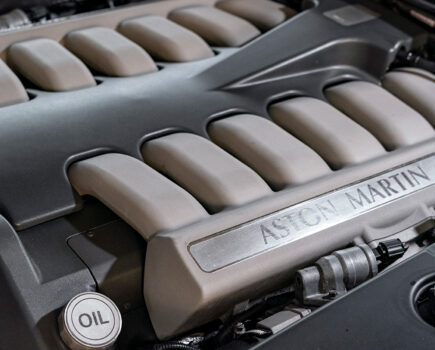The birth of modern era Aston Martin, bankrolled by Ford, featuring a new platform and a timelessly handsome design. The importance of the DB9 to Aston Martin really cannot be underestimated
Words: Kyle Fortune
For all its prettiness, the Aston Martin DB7 was a car forced to made the best of its 1970s Jaguar XJ-S underpinnings. The DB9’s structure was a big step forward by comparison: dubbed VH (Vertical/Horizontal), it uses an innovative, strong and lightweight bonded aluminium construction which gives the car a far more convincing platform, with its bodyshell being 25% lighter yet twice as rigid as the DB7’s.
The DB9’s beauty is undeniable and it’s modern Aston Martin in its engineering, while its style will dictate Aston Martin’s design direction for the foreseeable future. The DB9 fuses traditional Aston Martin visual cues with a modernity and, crucially, a finish that betters any Aston Martin before it. A beautifully proportioned shape, the DB9 mixes a simmering muscularity with an elegance that gives it that universal Aston Martin trait of acceptance and sophistication, something no other manufacturer has ever managed to achieve so convincingly.
The Aston Martin DB9 isn’t unique in providing a big, brawny 12-cylinder engine combined with hand-built luxury and an exotic badge. The Bentley Continental GT does much the same, albeit with four-wheel drive and a bit less finesse dynamically, while the Ferrari 575 Maranello is a more exclusive option if you could live with just two seats. If you want something a bit more directly comparable then the 612 Scaglietti with its four seats would suit. Mercedes-Benz can muster some alternatives like the SL or CL, with V12s or supercharged V8s, while Porsche offers up its 911 Turbo. Maserati’s Gran Turismo had the head-turning looks we’d expect from the company, if not the slick precision from its paddle-shifted transmission. The DB9 has rivals, then, but it offers something a little bit different.
It’s not just outside where the DB9 has the capacity to wow; the interior exhibits a generational leap over its predecessor. There’s a neat simplicity to the cabin. with the centre console (described by Aston Martin as a ‘waterfall’) containing the stereo, heating and ventilation controls. Above them the push-button functionality of the six-speed Touchtronic automatic transmission is simply laid out with four buttons, with the engine start button nestled between reverse and neutral. The crystal circle with the Aston Martin winged badge lights when you get in and insert the uninspiring Volvo-derived key in the ignition, that lit engine start button adding some theatre into the proceedings – as if the rousing of its 5.9-litre V12 needs any help in that area.
Push that button and there’s a distant, abrupt whir as the starter motor engages, waking the V12. It does so with a surprisingly aggressive bark before settling into a slightly more dignified idle. The V12’s aural performance is so appealing that it allows forgiveness for Aston Martin’s only transgression into corniness, with the LCD display nestled within the instruments displaying ‘Power, Beauty, Soul’ before the engine fires. Apparently, that wincing pause is to give it time to run its electronic diagnostics – but if you’re the type who finds such things stomach churning then avert your eyes.
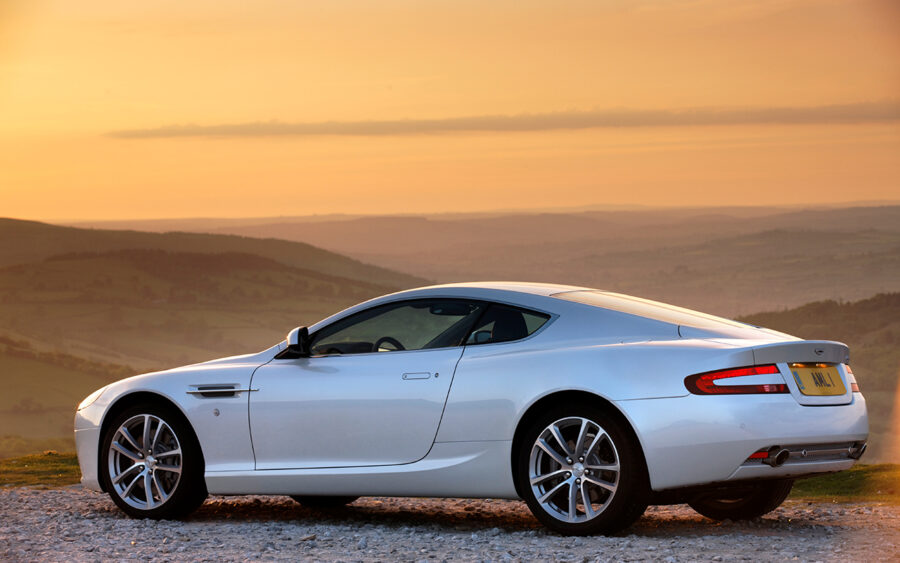
That’s not so easy, because of all the elements in the Aston Martin DB9’s interior the most striking is unquestionably the instruments themselves. Aston threw out convention and created gauges that wouldn’t disgrace a Swiss watch manufacturer. Their metalled finish might not be the last word in clarity but Aston Martin’s then-CEO Ulrich Bez was unapologetic about that at the car’s launch, suggesting people should instead just enjoy their beauty. It’s difficult to argue against that, unless they’re dazzling you in the sun – a problem more likely to be an issue on the Volante open-topped version.
Those dials see their needles repel each other from the bottom of their movement, the rev counter to the right going around to 8,000rpm, the speedometer tantalisingly reading 220mph on its outer rim. Both those numbers are a touch disingenuous, because flat out the DB9 will never go faster than 186mph, while the 5.9-litre V12’s maximum engine speed is 7,200rpm. Its peak 450hp is developed at 6,000rpm, that underpinned by 570Nm maximum torque at 5,000rpm. The effortless mid-range on offer from the V12 such that you’ll rarely find the need to wring it out to its redline anyway. There might not be the need, but the desire is there at times, not least because doing so allows the V12 its full voice, it’s deep, assertive but cultured notes rising notably to a more searing, overt blare as you do so, it a sound that’s obviously V12 in its timbre, but very British in its resonance.
That’s true, too, of the dynamics, which differ from Italian and German rivals, the Aston Martin DB9 a car that, while not lacking in precision, goes about getting down the road without some of the hyperactivity that defines some of those competitors. That’s not to say there’s detachment, the DB9 rewarding with good levels of feel and engagement, only it does so without being overly demanding, or distracting. It’s a fine balance, though one which wasn’t always apparent in every example, with drives of different DB9s around its launch underlining they’re sensitive to set-up and tyre pressures. The steering in all requires some heft, too, the column weighty, that meaning some muscle’s required winding on and off lock if you’re climbing a many hair-pinned alpine pass, but conversely translating to fine high speed stability and confidence if you’re maintaining indecent progress on roads less aggressively contoured. The suspension’s ability to cosset is sometimes troubled by sharper ridges and expansion joints, while its large tyres will slap if the surface is poor, though it’s no worse in this regard than any of its competition. What is, is the sometimes kickback though that steering, that is perhaps a result of the inherently stiff platform that underpins it.
With its V12 related to the Vanquish Aston has sensibly mated the engine to a conventional torque convertor automatic transmission. Dubbed Touchtronic, it’s a ZF gearbox with six ratios, its shift seamless in auto, and entertaining when you take over and use the paddleshifters yourself. A manual followed later but three-pedal, stick-shifted DB9s are rare beasts, not least because the Touchtronic allows the best of both worlds, giving the DB9 effortless GT character, with those paddle-shifters there for when the roads are more interesting and the mood takes you. As it well might, because the DB9 is a car of multifarious talent; it’s comfortable and refined, yet brawny and downright uncouth at times.
That it’s wrapped in a body which is so achingly desirable only is the Aston norm, but here it’s underpinned with a modern, stiff chassis, with crash structures that benefitted from its Ford (more correctly its Volvo offshoot) parent company’s expertise, plus a superb automatic transmission partnered to a V12 engine that’s eager to please with prodigious performance and effortless pace. The Aston Martin DB9 really was an evolutionary leap for Aston Martin that signalled a more interesting future for the marque. Today, it’s a true modern classic.

